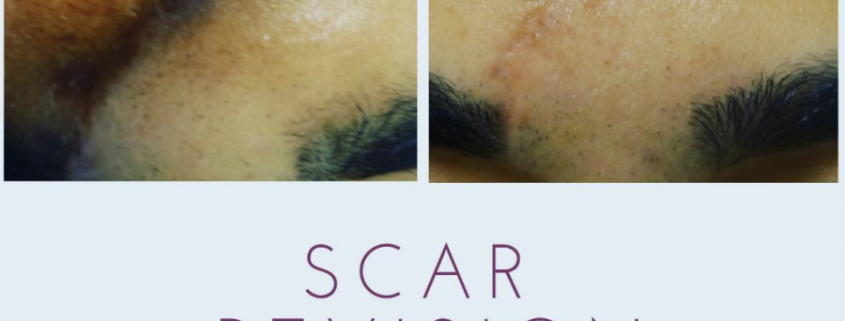The Secret of A Good Scar
All surgery will leave a mark or scar of some sorts whether it be having a mole cut out or shaved or having a lesion scraped or having something removed by laser. All of these things will damage the skin and cause some form of scarring. The scarring is usually quite red and obvious to start off with and it is how the scarring is managed that can often make the difference between a good scar and a bad scar.
Qualities of a good scar
The first step in obtaining a good scar is to plan where the scar is going to lie and this is something we as plastic surgeons spend a lot of time studying in order to hide scars as much as possible. There are natural lines, skin creases and shadows all over the body and plastic surgeons will exploit these in order to leave as little a trace as possibly that anything has been done. The next step is to use meticulous surgical technique and we are trained to minimise the handling of the tissues and to use fine instruments so that this normal skin is damaged as little as possible to improve the healing. The technique of suturing a wound is an art in itself and it takes many years to learn the techniques to bring the edges together to maximise the contact and the quality of the resulting scar. It is important that the wound is not closed under any tension and so we use techniques to support the wound using deep sutures or occasionally by moving tissue around to move the tension from one area to another in order to maximise the chances of good wound healing and resulting scars.
Postoperative management of scars
It is important that scars are supported in the initial phases which is why we often use deeper layers of sutures to reinforce the wound. Tapes and dressings can help although these can often be kept light and the wound is to be kept clean. Scars on the face are often left exposed and we will often dress these simply with antibiotic ointment. We try to use waterproof dressings when possible, which means that you can wash and shower immediately.
Timing of suture removal
The classic hatched appearance of a scar with a straight line and dots on the other side as seen in Popeye is something we try and avoid and the dots are caused by sutures being left in long enough to cause a scar of their own. For this reason we will avoid leaving sutures in too long and so on the trunk will often use dissolvable sutures which are buried and you cannot see and on the face we will remove sutures early, around five to seven days. In some cases the wound healing is more important than the quality of the resulting scar and so there may be incidences where it will be reasonable to leave the stitches in for longer to make sure the wound stays together. It is important to avoid too much activity around the scar to allow the wound to heal and to avoid stretching of the scar.
Long term management of scars
All scars will be red and quite obvious to start off with and can take some months before they start to fade. Moisturise and massage of the scar will help them to fade and there are lots of products available such as Bio Oil, Vitamin E and Aloe Vera which can be used to massage the scars once they have had a chance to heal. The scar will be red and obvious for the first three to six months and while it is red and obvious it is important to avoid the sun because if you get a suntan on a red scar while it is still active then when you lose the suntan the scar will stay pigmented and you will end up with a brown scar. This does not mean that you cannot go into sunny climates but it does mean that you should keep your scar covered while you are out in the sun and this can mean high protection sun block, tape or simply wearing a wide-brimmed hat or clothes over the scar to avoid getting a tan on that area. Most scars will settle by a year although it can take longer.
For more advice feel free to get in touch. You can call us on 0121-454 3680 or contact us through the website. I do a live Q&A on Facebook every Tuesday at 7pm. It would be great to see you there and I would be happy to answer any queries.





Leave a Reply
Want to join the discussion?Feel free to contribute!